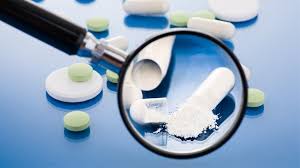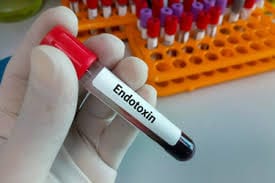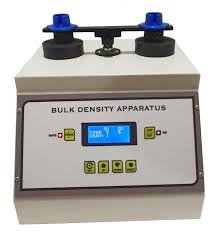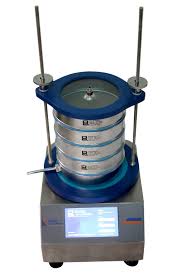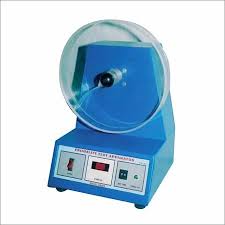|
Getting your Trinity Audio player ready... |
Guideline For Elemental Impurities Q3d(R2)
Safety Assessment of Potential Elemental Impurities
Principles of Safety Assessment for Elemental Impurities in Oral, Parenteral, and Inhalation Drug Products
Elemental Impurities: The safety assessment process for elemental impurities aims to evaluate the potential risks associated with these impurities in drug products, considering various routes of administration, including oral, parenteral, and inhalation. To determine the permissible daily exposure (PDE) for each elemental impurity, the methodology described in ICH Q3D(R2) is followed. This guideline provides a framework for assessing the safety of elemental impurities in pharmaceuticals by reviewing available data from scientific journals, government reports, international regulations, and research studies.
The principles employed in establishing the PDEs are rooted in the ICH Q3C guidelines on residual solvents. Through careful analysis of publicly available information, the PDE values for elemental impurities have been derived for the oral, parenteral, and inhalation routes. For practical purposes, these PDE values have been rounded to one or two significant figures and are presented in Appendix 2, Table A.2.1 of the guideline. A detailed summary of the safety assessments, identifying the critical studies used to establish the PDE for each element, is also provided in Appendix 3.
However, it should be noted that some elements, including iridium, osmium, rhodium, and ruthenium, do not have sufficient data to establish a PDE for any route of administration. For these elements, the PDEs are derived based on their similarity to palladium, which has a more established safety profile.
Factors Considered in the Safety Assessment
Several factors are taken into account when assessing the safety of elemental impurities in drug products. These factors, listed in order of relevance, include:
- Oxidation State of the Element: The likely oxidation state of the element in the drug product is a key consideration, as this can influence the toxicity of the impurity.
- Human Exposure and Safety Data: Existing human safety data, if available, is used to evaluate the potential risks associated with the impurity.
- Animal Study Data: Relevant animal studies are reviewed to understand the potential impact of the elemental impurity on human health.
- Route of Administration: The method by which the drug is administered—oral, parenteral, or inhalation—plays a crucial role in determining the toxicity of the elemental impurity.
- Relevant Endpoint(s): The safety assessment also considers the specific health outcomes or endpoints that the impurity may affect, including systemic toxicity, local toxicity, and other relevant adverse effects.
In addition to these factors, standards for daily intake of certain elemental impurities exist for various sources, including food, water, air, and occupational exposure. Where applicable, these standards are incorporated into the safety assessment and used to determine the appropriate PDEs.
The longest duration animal study is typically preferred for establishing the PDE. However, when shorter-duration studies are deemed more relevant, the rationale for their selection is explained in the individual safety assessments. Inhalation studies using soluble salts, when available, are prioritized over studies involving particulates for the derivation of inhalation PDEs.
When data is lacking, or when available data is insufficient to conduct a safety assessment for a particular route of administration (oral, parenteral, or inhalation), the oral bioavailability of the substance is considered. Modifying factors based on oral bioavailability are used to derive PDEs for the parenteral and inhalation routes. For example, if the oral bioavailability of a substance is less than 1 atom per 10^6 atoms of silicon, it may require adjustments in the PDE calculations.
Classification of Elemental Impurities
Elemental impurities are classified based on their toxicity and likelihood of being included in the drug product. This classification helps prioritize which elements should be more closely monitored and controlled during the drug manufacturing process.
Class 1 Elements
Class 1 elements, including arsenic (As), cadmium (Cd), mercury (Hg), and lead (Pb), are considered highly toxic to humans and have limited or no use in pharmaceutical manufacturing. These elements are often found as contaminants in raw materials such as excipients, which are used in drug formulations. Due to their high toxicity and potential sources in the drug product, these elements require careful risk assessment across all possible routes of administration. Testing for Class 1 elemental impurities is generally only necessary when the risk assessment identifies the need to meet the established PDE. Not every component in a drug product will require testing for these impurities; rather, testing should be conducted when the risk assessment indicates that it is needed to ensure the PDE is not exceeded.
Class 2 Elements
Class 2 elements are toxic to humans and their toxicity varies depending on the route of administration. These elements are further divided into two sub-classes based on the likelihood of their presence in the drug product:
- Class 2A Elements: These elements are more likely to be present in the drug product, and therefore require comprehensive risk assessment for all potential sources and routes of administration. Class 2A elements include cobalt (Co), nickel (Ni), and vanadium (V).
- Class 2B Elements: These elements have a lower probability of being present in the drug product due to their low abundance and low likelihood of being co-isolated with other materials during the drug manufacturing process. As a result, these elements may be excluded from risk assessment unless they are intentionally added during the production of drug substances, excipients, or other drug components. Class 2B elements include silver (Ag), gold (Au), iridium (Ir), osmium (Os), palladium (Pd), platinum (Pt), rhodium (Rh), ruthenium (Ru), selenium (Se), and thallium (Tl).
Class 3 Elements
Class 3 elements have relatively low toxicity when administered orally, with high PDEs (typically greater than 500 µg/day). These elements may not need to be considered in the risk assessment for oral administration unless they are intentionally added. However, they may still require consideration for parenteral and inhalation routes of administration. Elements in this class include barium (Ba), chromium (Cr), copper (Cu), lithium (Li), molybdenum (Mo), antimony (Sb), and tin (Sn).
Other Elements
Certain elemental impurities that have not been assigned specific PDEs due to their low inherent toxicity or because they are regulated differently across regions are not addressed in this guideline. However, if these elements are present in a drug product, they may be governed by other applicable guidelines or regional regulations. Examples of such elements include aluminum (Al), boron (B), calcium (Ca), iron (Fe), potassium (K), magnesium (Mg), manganese (Mn), sodium (Na), tungsten (W), and zinc (Zn). Specific guidelines may exist for certain populations, such as patients with compromised renal or hepatic function, where certain elemental impurities like aluminum or manganese may be of concern.
Risk Assessment and Control of Elemental Impurities
In managing the risks associated with elemental impurities, the principles of quality risk management, as outlined in ICH Q9, should be followed. The risk assessment process is based on scientific principles and knowledge, linking safety considerations with an understanding of the drug product and its manufacturing process. The goal of the risk assessment is to assess the levels of elemental impurities in the drug product and compare these levels to the established PDEs.
The risk assessment process involves reviewing data from various sources, including data provided by the applicant, drug substance manufacturers, excipient suppliers, and published literature. The applicant must document the risk assessment and control strategies in a manner that is appropriate for the level of risk associated with the product. It is important to note that formal risk management processes are not always required; informal risk management procedures may also be acceptable depending on the level of risk involved.
General Principles of Risk Assessment
The risk assessment for elemental impurities follows a three-step process:
- Identification of Sources: The first step is to identify potential sources of elemental impurities in the drug product. These sources may include elements intentionally added during the manufacturing process (e.g., catalysts) or those that are unintentionally introduced from raw materials, water, or manufacturing equipment.
- Evaluation of Elemental Impurities: In the second step, the level of each elemental impurity is evaluated, and it is compared with the corresponding PDE. If the level of an impurity exceeds the established PDE, further controls or actions may be necessary.
- Documentation of Risk Assessment: The final step is to document the risk assessment, summarizing the findings and determining whether the existing controls in the manufacturing process are sufficient. If not, additional controls may be implemented to ensure that elemental impurities are kept within safe limits.
Potential Sources of Elemental Impurities
There are several categories of potential sources of elemental impurities in drug products:
- Intentionally Added Elements: Certain elements are intentionally added during drug manufacturing (e.g., as catalysts or during the synthesis of drug substances or excipients). The risk assessment must consider the possibility that these elements may remain as impurities in the final product.
- Unintentional Contaminants: Elements that are not intentionally added, but are present in raw materials such as drug substances, excipients, and water, can also contribute to elemental impurities in the drug product.
- Manufacturing Equipment: Elemental impurities may be introduced from manufacturing equipment, especially if the equipment is made from materials that contain these impurities.
- Container Closure Systems: Impurities may also be leached into the drug product from the materials used in packaging, such as container closure systems.
Each of these potential sources must be considered in the risk assessment to determine their contribution to the overall level of elemental impurities in the drug product. By understanding these sources, manufacturers can implement controls to minimize the risk of contamination and ensure the safety of the final product.
Identification of Potential Elemental Impurities:
- Intentionally Added Catalysts and Reagents:
- If any element listed in Table 5.1 is intentionally added during drug manufacturing, it must be considered in the risk assessment. The identity of these impurities is known and methods for controlling them are clearly defined.
- Drug Substances and Excipients:
- Some elemental impurities may be present in drug substances and excipients even if not intentionally added. Risk assessments should evaluate the possibility of such impurities being present, particularly those from Classes 1 and 2A for oral drugs, and Classes 1, 2A, and 3 for parenteral and inhalation drugs.
- Manufacturing Equipment:
- Elemental impurities may arise from the manufacturing equipment, although this contribution is generally minimal. The risk assessment should assess the equipment’s materials and whether impurities from them may be transferred to the drug product.
- Container Closure Systems:
- For liquid and semi-solid forms, elemental impurities can leach from container closure systems. The risk assessment should include studies to determine potential leachables based on various factors like material composition, pH, and temperature.
Risk Assessment Process:
- The risk assessment identifies any potential elemental impurities and assesses their sources. The applicant’s process may include data from prior knowledge, literature, suppliers, and testing to identify and control potential impurities.
- A significant element of the assessment is determining whether the impurity concentration exceeds the permissible daily exposure (PDE) threshold. If the concentration is below 30% of the PDE, additional controls may not be necessary. If it exceeds, further measures should be implemented.
Recommendations for Control:
- Control Methods:
- Techniques like modifying manufacturing steps, in-process controls, or setting specification limits on materials and excipients may be used to control elemental impurities.
- Periodic Testing:
- Regular testing may be necessary to ensure the elemental impurity levels remain within the set limits, especially in the final drug product.
- Conversion of PDEs to Concentration Limits:
- PDEs (given in µg/day) are converted into concentration limits in drug products or their components. This ensures the drug product stays within safe impurity levels.
Special Considerations for Biotechnology Products:
- Biotech-derived drugs typically have lower risks for elemental impurities since elements are not usually used as catalysts or reagents. The risk from the drug substance stage is low because of purification steps that remove impurities. However, risk assessment should still include excipients, environmental factors, and drug product processing.
Speciation and Analytical Procedures:
- Speciation refers to understanding the form of an element (its chemical species), which can affect its toxicity. However, total elemental impurity levels are usually sufficient for assessing compliance with the PDE. Analytical methods should be validated and specific to the impurities under consideration.
Lifecycle Management:
- The risk management process for elemental impurities should be maintained throughout the drug product’s lifecycle, from development to discontinuation. Changes to the manufacturing process or components (like raw materials or equipment) should trigger a re-evaluation of the risk assessment and control strategies.
